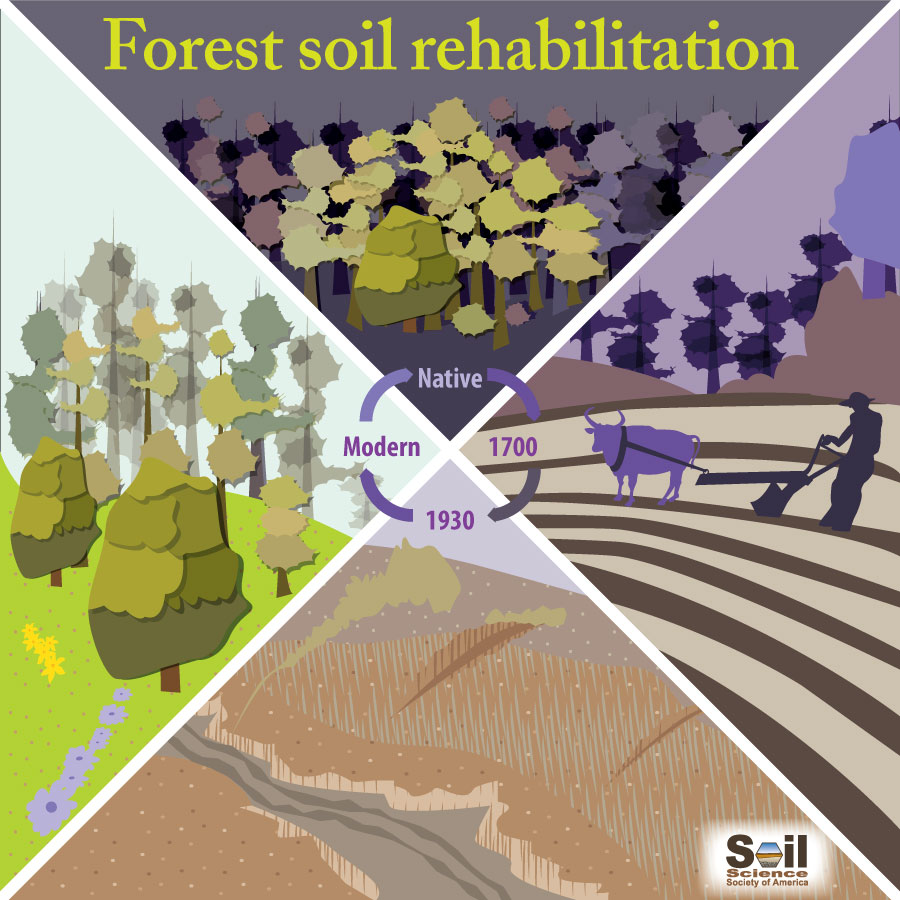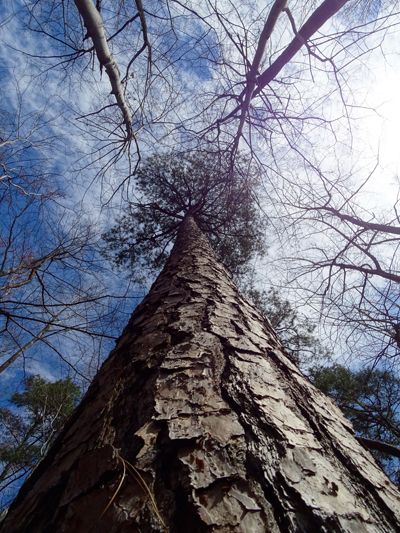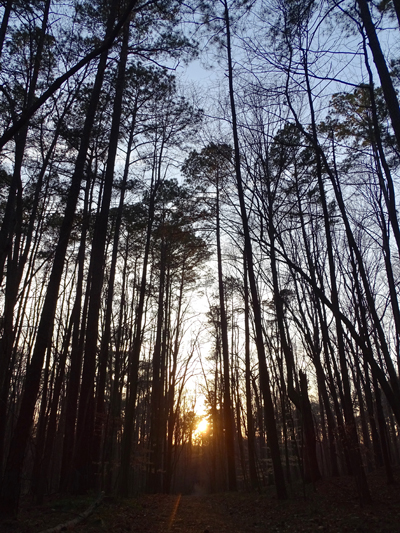When some of the colonists arrived to the southern states in the 1700s – notably what is now Virginia and North Carolina – they needed to produce their own crops. Lands were converted from forests thought to mainly be composed of hardwood species like oak and hickory into agricultural lands as they cleared and harvested timber (see diagram below). At the time, this probably made sense: they needed to eat food and make money. And yet, these colonists arrived to areas with soils that were much different than their home countries. And, with little knowledge of how to manage the soil, came erosion and other soil degradation.

With approximately 200 years of agricultural production, severe soil erosion occurred. Almost a foot of topsoil was eroded across the Southeastern US. Eroding and degrading soil was one of the factors that led to the abandonment of agricultural lands across much of the region. In the early 1900s, the US Forest Service began to reclaim forest land by planting Loblolly Pine (Pinus taeda) forests. Pine forests in states like North Carolina are so famous that there are songs that refer to North Carolina as “the land of the pines.”
Researchers study the growth and regeneration of these forests to see if they are likely to return to a condition more like they were before they were cleared and plowed. Extreme gullying from erosion caused greatest hurdles for the regeneration of these forests. The loss of the soil – which washed away to other areas – is another. Erosion and soil compaction reduced the ability of water to soak into and move through soils (https://soilsmatter.wordpress.com/2016/05/15/how-does-water-move-through-soil/).
Healthy soil is a complex mixture of particles, soil microorganisms and spaces in between that soil scientists call pores. Pores vary in size, ranging from micropores to macropores. These pores allow air and water to move through the soil, and provide for plant and microbial growth.
Plowing and erosion compacted the soils, and destroyed the soil pore structure. Macropores are essentially the pipes or voids that allow water to soak into and down through soils during storms. Good macropore structure is essential in the case of heavy rainfall, when soils need to quickly soak in the water. Without macropores, rainfall will run over the soil, and worsen erosion.

Another factor that worsened the erosion of these areas during agricultural use was the difference between transpiration rates of agricultural crops and forest trees. You might know that plants not only use water for growing, but they also release water back to the atmosphere – a little like sweating – through a process called transpiration. Since crops were not transpiring water as quickly as the original forest fauna, water was retained in the soil much longer. That left soggy soil which couldn’t absorb as much water as forest-covered soils. With each additional rainfall, the problem worsened, and erosion increased, washing away topsoils and their nutrients.
My research has studied the soils in reforested Loblolly pine forests. We used X-ray Computed Tomography (X-ray CT) to analyze intact soil cores. It’s the same tool used by doctors to measure and visualize structures inside the human body! Using CT, we can look at the pores in the topsoil – which tells us something about the soil health. We’ve compared the soils of the Loblolly pine forests to hardwood forests and local plowed agricultural soils.

Our research shows that the regrowth of forests for the last 60 to 80 years resulted in the regeneration of topsoil macroporosity. For the upper 15 centimeters of soil, the proportion of the soil volume occupied by macropores, coarse organic matter, and roots appears to be almost identical between reference hardwood forests and old-field Loblolly Pine forests. This indicates that the reforestation of these former plantation soils have improved the soils by regenerating their topsoil macroporosity.
Answered by Zach Brecheisen, Duke University
To read more about farming challenges for the pilgrims, see this blog https://soilsmatter.wordpress.com/2016/11/15/what-type-of-farming-challenges-did-the-pilgrims-face/.
To receive notices about future blogs, be sure to subscribe to Soils Matter by clicking on the Follow button on the upper right! Explore more on our webpage About Soils. There you will find more information about Soil Basics, Community Gardens, Green Infrastructure, Green Roofs, Soil Contaminants, materials for Teachers and more.

Fantastic article; a lot of important points were covered in just a short piece (transpiration, porosity, the slow building of soil). But what of mycorrhizal fungi? Aren’t they the glue that binds soil, further preventing erosion and increasing absorption? Both forests and untilled ag promote these beneficial organisms.
In Texas, there is a re-gen project underway with a different kind of forest: native grasses. This in conjunction with porous limestone actually created mini-aquifers, which resulted rambling streams and lakes .. an entirely new ecosystem. Flash flooding is a very real concern in that area. There is a short YT on it by NatGeo, Selah Ranch.
Given our changing climate, we need to begin thinking more on how nature mitigates flooding and drought. Soil conservation is a very good place to start. Thank you for keeping me thinking!
Hi Shannon, thoughtful questions! We try to keep our blogs short and digestible. We have a lot of blogs on mychorrhizal fungi, but this one is really fun: https://soilsmatter.wordpress.com/2017/08/01/do-plants-and-soil-really-talk/ Thanks for reading! SVF